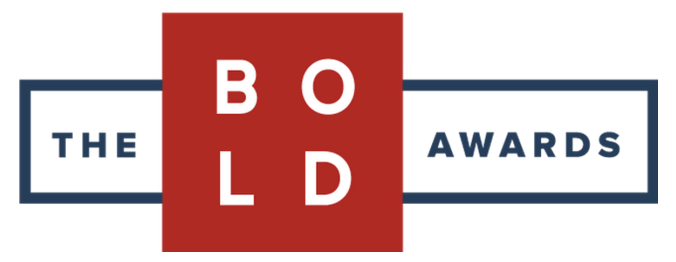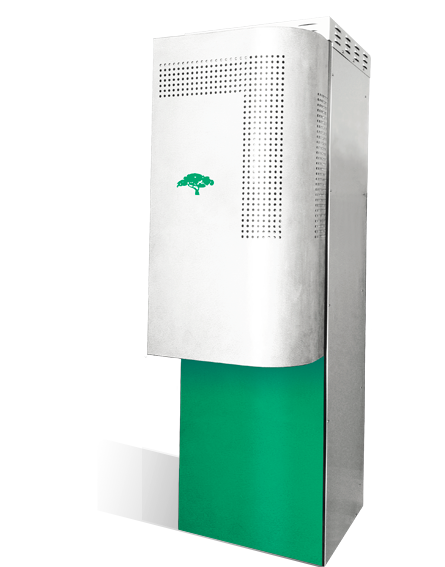PEI Blog
Finalists for the 2015 BOLD Awards
On 12, Nov 2015 | In PEI Blog | By Molly

An esteemed panel of sustainability leaders has announced the finalists for the inaugural BOLD Awards honoring leaders in the green building industry. The quality of this group of 20 finalists is a testament to how far we have come in green design, and it is exciting to see how so many committed individuals—those named here and many more—are boldly leading the industry to greater heights and toward the wider and wider adoption of green buildings.
For a list of the finalists and for more details about the award, please check out this guest blog post below from the organizers of the BOLD Award.
–Point Energy Innovations
20 Industry Leaders Selected As Finalists for The BOLD Awards 2015
Although buildings receive all sorts of awards, there’s a gap in the system. While beautiful, exciting buildings are created and operated every day by amazing individuals, there are few – if any – awards recognizing the people behind innovations and achievements in the green building space. To fill that hole, four innovative companies formed awards to make sure amazing leaders receive the credit they deserve for transforming the built environment.
The Building Optimizers Leaders and Disruptors Awards (The BOLD Awards) spotlights individuals and teams who drive the green building industry. These leaders are making our surroundings more intelligent, more comfortable, and more efficient. Formed in 2015 by Aquicore, Building Robotics, Enlighted and View, The BOLD Awards spotlight 4 categories of amazing leadership within sustainable buildings.
In its inaugural year, with nearly 100 entries of incredible leaders, the judging panel had quite a task selecting the finalists. The judges, comprised of cutting-edge changemakers including representatives from the United States Green Building Council, GreenBiz, McDonough + Partners and more, evaluated each nomination based on the following criteria:
- Environmental impact: What environmental impact has the nominee created or expected?
- Human impact: How did the nominee change comfort, productivity, or the general well-being of the community?
- Innovation: Did the nominees implement an innovative project?
After careful consideration of each nomination, the panel was able to narrow the amazingly talented list to these 20 influential leaders.
The Champion:
- Ralph DiNola, CEO, New Buildings Institute
- Eugenia Gregorio, Director of Corporate Responsibility, The Tower Companies
- Fulya Kocak, Director of Sustainability, Clark Construction
- Sara Neff, Vice President of Sustainability, Kilroy Realty Corporation
- Anthony Ravitz, Real Estate and Workplace Services Green Team Lead, Google
The Mentor:
- Mike Dieterich, Sustainability Manager, Renew and Sustain
- Lee Dunfee, Senior Vice President of East Engineering Operations, Cushman & Wakefield
- Sukanya Paciorek, Executive Vice President, Head of Asset Management, Brooklyn Navy Yard
- Russell Perry, Director of Sustainable Design, SmithGroupJJR
- David Summers, Principal, LA Mechanical Department Head, Glumac
The Inventor:
- Donnel Baird, CEO, BlocPower
- Davida Herzl, CEO and Co-Founder, Aclima
- Peter Rumsey, Founder and CEO, Point Energy Innovations
- Stacy H. Smedley, CEO and Co-Founder, SEED Collaborative
- Avideh Zakhor, CEO, Indoor Reality
The Unsung Hero:
- Eden Brukman, Founder and Principal, Concenter Solutions
- Sara Cederberg, Technical Director of LEED, United States Green Building Council
- Chateau Hough Urban Agriculture Zone in Cleveland, Ohio
- Wes Sullens, Green Building Program Manager, StopWaste of Alameda County
- William (Bill) Updike, Chief of Green Building & Climate Branch, Department of Energy & Environment, The Government of The District of Columbia
Congratulations to all the finalists!
To see which of these outstanding leaders receive The BOLD Awards, join the host companies on Wednesday, November 18 from 5:30-7:30 p.m at Lucky Strike – Gallery Place (701 7th Street, NW Washington, DC 20001). Awards will be announced at 6:00pm.
Throughout the event, you can enjoy complimentary beers and bites, challenge your colleagues to bowling matches or billiards, and celebrate Building Optimizers, Leaders and Disruptors leading our industries to a brighter future. Tickets are running out, so save your spot today.
For more information, visit www.theboldawards.com.
Where Tech Meets Real Estate: Perspective on an Internship at Point Energy Innovations
On 15, Sep 2015 | In PEI Blog | By Angad
By Angad Deep Singh

“Reimagining all things energy” embodies the vision I had when I decided to enter Stanford to pursue a Masters in Sustainable Design and Construction. While many of my fellow students were pursuing careers in tech, I hoped to take some of the innovative thinking the tech industry is known for and apply it to the slower moving world of real estate.
My Professor Peter Rumsey’s passion for applying unconventional thinking and innovative processes to achieve sustainability excited me more than anything else I’d heard at Stanford, so I decided to apply for an internship at his firm, Point Energy Innovations (PEI). It was an exciting ten weeks of learning, challenging every conventional design process and striving for continuous improvement in every aspect of design. Beyond energy and performance, I learned the importance of considering the legacy of a design on building inhabitants and how we can apply strategies from the fast moving tech sector to achieve remarkably superior buildings.
Point Energy gave me the opportunity to experience the sought after “startup life.” Agile and nimble in its approach, like most startups in the Silicon Valley, PEI allowed me to experience working in the “garage,” where Point Energy is headquartered. I was immediately struck by the energy and passion of the team in executing unconventional design. My first task was to analyze the need for insulating pipes carrying chilled water buried at a depth of two meters below the ground. We were concerned about the water gaining temperature as it flows from the cooling tower to the chillers.
Looking at soil characteristics (constitution, corrosive nature, heat transfer capability etc.) and rate of flow of water, we determined that even without insulation there wasn’t significant temperature gain but the corrosive nature required us to protect steel from coming in contact with the soil. Hence we decided to forgo insulation but coat the pipes with epoxy. In standard design, all buried pipes are automatically insulated. However, this is not always the best way to engineer a system. In this case, burying uninsulated pipes provided significant cost savings without impacting the performance of the system. This exercise provided me with the important insight that questioning rules of thumb in building design could save energy and materials and improve the quality of our buildings.
The built environment is one of the biggest contributors to the energy demand of any economy and hence also provides some of the largest opportunities for improving the energy efficiency. Creating highly insulated building envelopes with integrated passive design features such as maximizing daylight while minimizing direct sunlight and insulation for reducing power consumption for heating, cooling and ventilation ensures that the energy usage of the building is minimized while the needs and comfort of the building occupants are not compromised. These are essential features of every building that PEI designs. But there’s another unique concept that is an integral part of the design process at PEI. They call it “humanizing” building design.
Humanizing Building Design still remains an obscure concept to most building designers. I was able to comprehend the thought process behind this simple, yet extremely powerful phrase when I worked on designing a Net Zero Energy middle school in Hillsborough, California. All classrooms in the building are naturally ventilated and cooled using outside air, with no mechanical cooling equipment. We implemented the strategy not only to reduce the energy consumption of the building but also to create a sense of ownership of the environment among the children in the school.
Incorporating the concept of environmental stewardship for the upcoming generation means that we help shape responsible citizens while at the same time making a school that uses minimal energy and boosts productivity of students. “Simplicity” and “inclusivity” are an essential and integral part of this concept. At each step of the design, we ensured that each stakeholder (occupants, maintenance staff, contractor, etc.) interacting with the building understood the intention behind our design and the purpose of the design, which would ensure that each aspect of the design is operated correctly maximizing results and achieving our target of creating an extremely comfortable yet low energy building.
Another obscure concept in building design, where “rules of thumb” and manufacturer claims still form the basis of design, is the practice of prototyping. Prototyping is a well-understood term in the technology industry, where various versions of the product are released and tested before the final product is released for use by the end consumer. A classic example of this is roof-top photovoltaic modules, wherein the design team often determines the number of modules to install based on the manufacturer’s efficiency claims. At PEI we were not satisfied with going purely by claims of the manufacturer and decided to adopt the “prototyping” approach. While designing buildings for a large well-known technology company in Silicon Valley that included building integrated photovoltaic modules, PEI decided to set-up a field experiment to determine the average efficiency of the module, while also determining how various environmental factors impacted the module efficiency. The results will allow building designers to more accurately predict the number of modules needed, resulting in better building design.
Although, the construction industry remains a traditional space with little acceptance of newer ways of doing things or outlandish ideas, it provides an excellent avenue for innovators and ideators to revolutionize an industry that creates the very buildings we spend most of our time in. It was great to learn firsthand how Peter Rumsey along with the small but extremely passionate PEI team are acting as this essential catalyst of change.
Side Effects of Energy Storage
On 08, Jul 2015 | In PEI Blog | By Derek
By Derek Felschow

Tesla’s Powerwall, an example of a residential energy storage battery system, will allow homeowners to take better advantage of their solar panels by storing the sun’s energy for use later in the day, in addition to serving as backup power during an outage.
The Association of Energy Engineers (AEE) presented the 2015 Energy Management Congress (EMC) in Long Beach, CA June 3-4, 2015. The conference held many insightful seminars, while the trade show displayed a sampling of the latest in green technologies, both focused on energy efficiency and energy management. If you want to lower your energy bill or catch up with the latest technologies, this is the place to be! I found the most interesting topic of the event to be energy storage because these systems can have significant effects outside the buildings that use them.
Electrical energy storage is a hot topic these days because renewable power is growing, and electricity demand is on a different schedule than the sun and wind. For example, PV (photovoltaic, or solar) panels produce the most power at noon when the sun is most intense, but the grid has a high spike in demand when people come home after work and cook, turn on lights, use electronics, etc. Renewable power generation capacity will eventually grow so much that energy storage will be necessary to bridge the gap between power generation and use. Other advantages to energy storage include a cleaner and more reliable grid. With costs coming down, we are going to see a lot more energy storage in the future. According to the Energy Storage Association Facts & Figures web page, market research firm IHS predicts there will be annual energy storage installation of 6 gigawatts (GW) in 2017 and over 40 GW in 2022, up from 0.34 GW installed in 2012 and 2013.
Batteries, gravity, compressed air, and ice are some energy storage solutions that are changing the energy landscape. One common application of these techniques is to shift electrical demand on the grid to off-peak times to save money for a building owner. (The utility charges higher electricity rates to compensate for generating additional power at peak times during the day when buildings are running at full load). To accomplish this shift, the systems are charged at off-peak times or with renewable power, and the stored energy is used during peak times to reduce load on the utility.

Green Charge Networks’ GreenStation battery system.
One specific example is Green Charge Networks’ GreenStation battery system, which is a modular unit that can be scaled to various power needs. These charge during off-peak times and discharge during peak times to avoid the peak electricity rates. The system has proven useful for saving 7-Eleven money during their rush hours, especially on July 11 when they hand out free Slurpees.
A disadvantage of transferring energy back and forth to a storage system is that the processes are not 100% efficient, so you don’t get back all the energy you put in. I started to wonder if a conference focused on saving energy should showcase these technologies that waste a small amount of energy as well as require additional materials and energy to create the products themselves. Discussing it further with my coworker, Alexis Karolides, she pointed out that reducing the peak demand during the day can help keep additional power plants offline (peaking plants). These are often coal- or gas-fired, so allowing them to stay off is a huge benefit, which I would expect to outweigh the consequences of the additional energy the storage systems require. I have not been able to find any numbers on this subject but would love to hear more if someone can share further insight.
Another great aspect of keeping peaking plants offline is saving all the water required to cool their systems. Noah Mundt from DNV GL spoke about the relationship between water and energy in his presentation called “The Water-Energy Nexus.” He pointed out that on average, for every gallon of water that a person uses directly (sink, shower, dishwasher, etc.), there are three gallons used indirectly. This is due to the fact that treating water requires a lot of energy, which requires water to cool the power plant producing that energy. This means water savings = energy savings, and vice versa. Therefore, keeping those power plants offline and saving that water also saves the energy used to treat that water, which saves the water used to cool the power plant that generated that energy…and so on. Again, I would expect this indirect effect of saving energy and natural resources outweighs the inefficiencies of energy storage systems.
This thought exercise should remind us that everything is connected, and many energy efficiency and energy management solutions may have bigger consequences, or benefits, outside of the systems themselves. In our efforts to be green, we must always remember to look at the bigger picture to ensure our solutions are creating the desired effect of reducing our energy and resource demands for the world and not just for one building.

